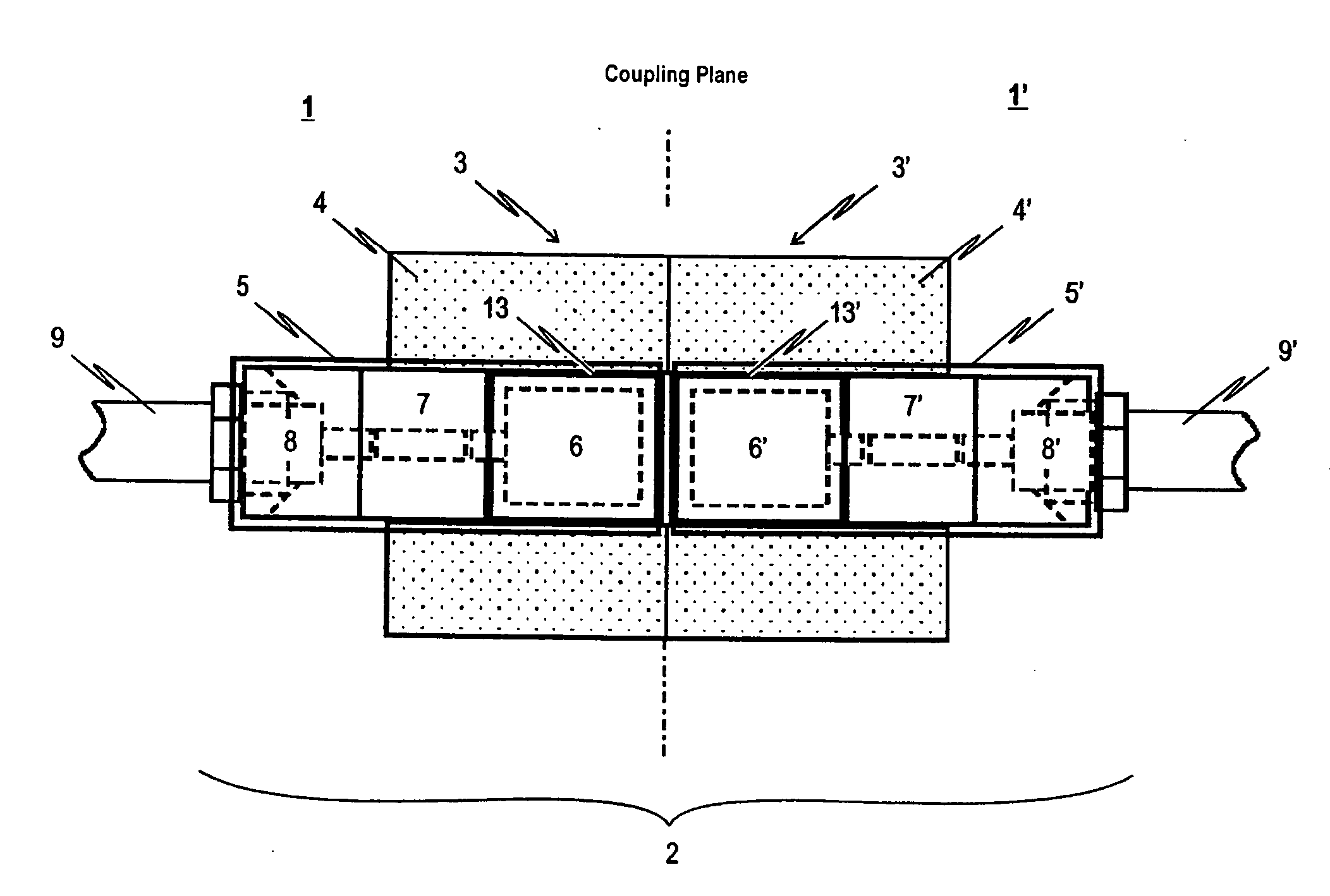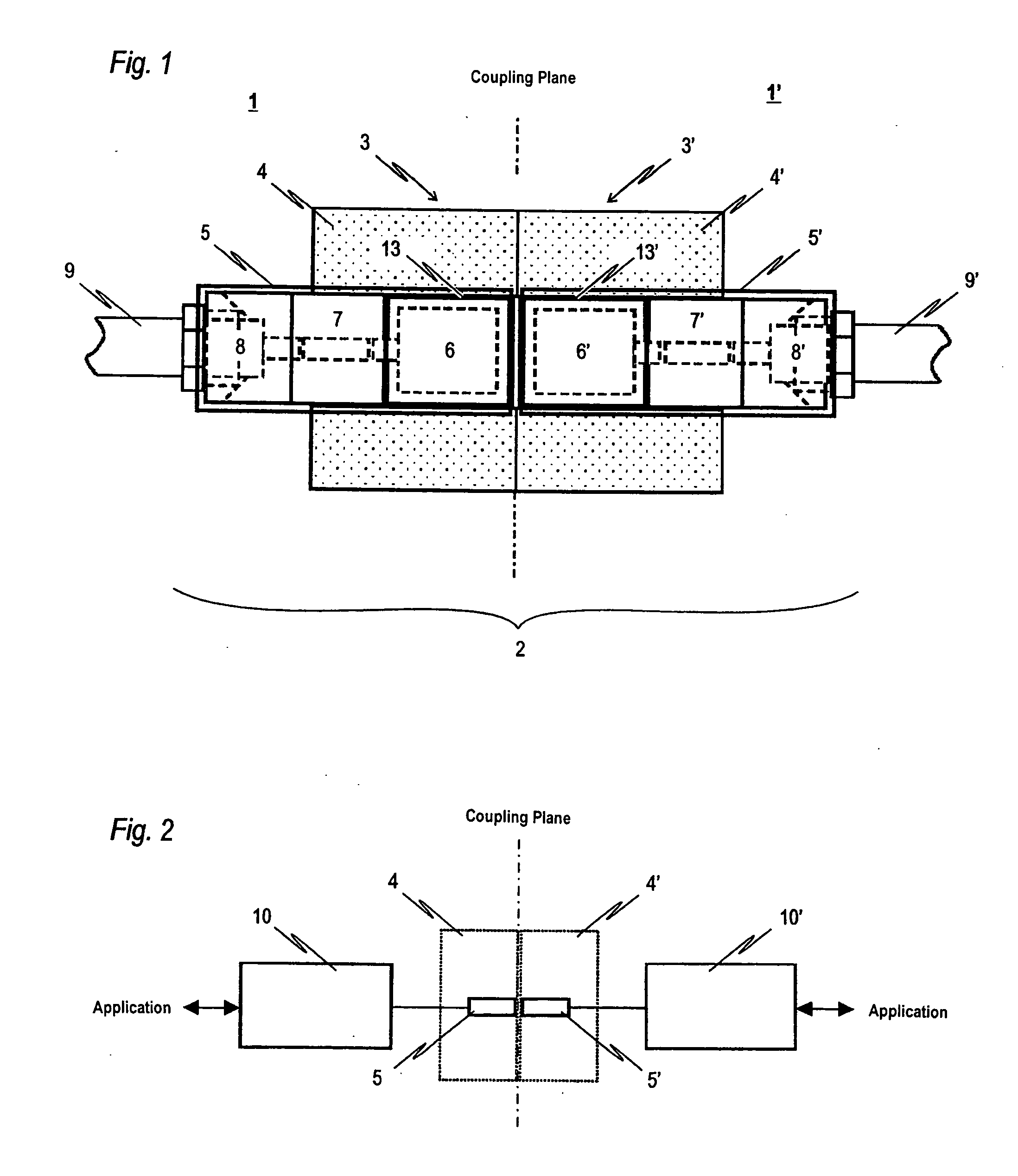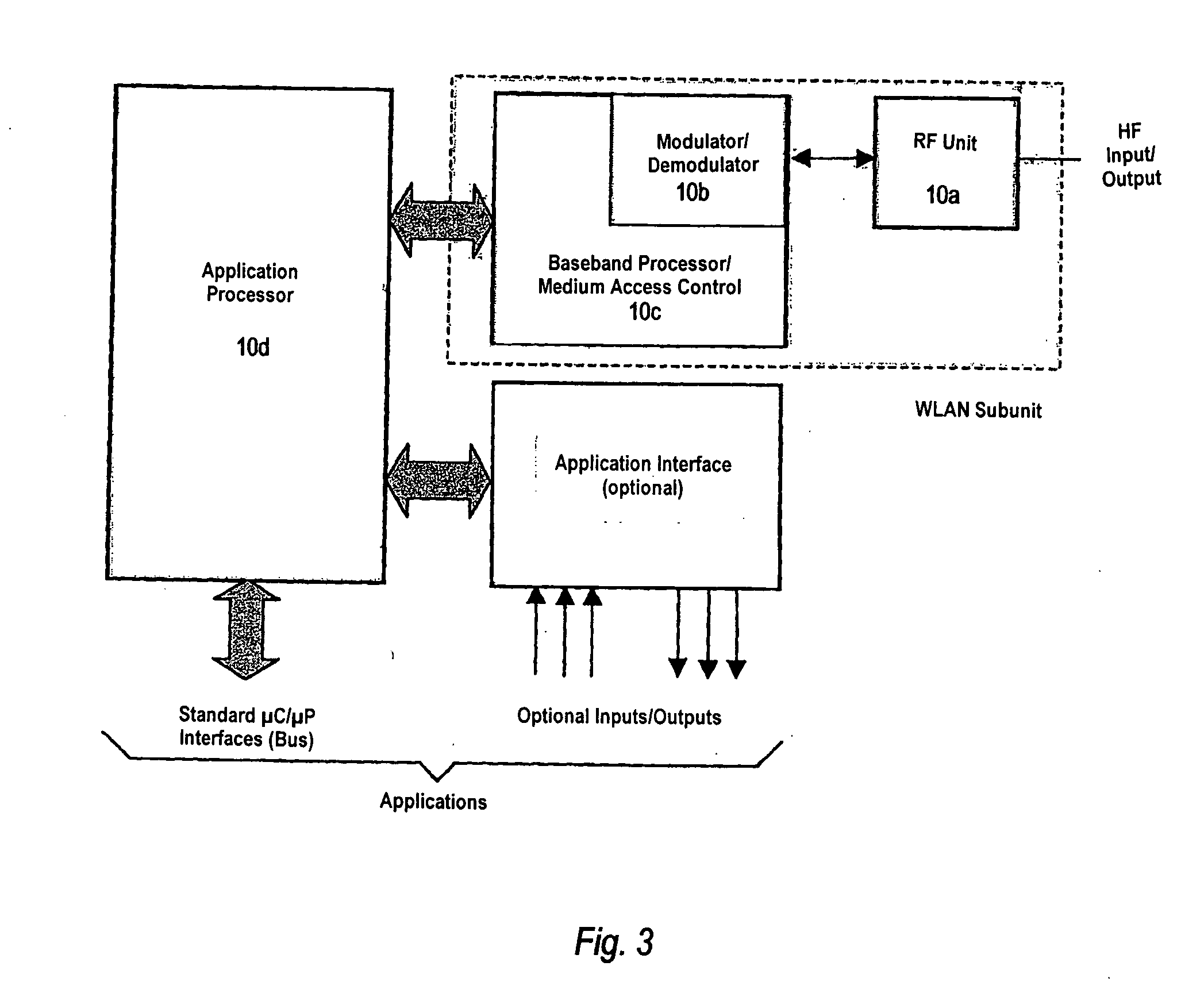Automatic central buffer coupling with signal transmission device
- Summary
- Abstract
- Description
- Claims
- Application Information
AI Technical Summary
Benefits of technology
Problems solved by technology
Method used
Image
Examples
Embodiment Construction
[0053]FIG. 1 is a schematic representation of one possible embodiment of the central buffer coupling 1 according to the invention which integrates a signal transmission device 2. Specifically, FIG. 1 shows a cutaway view of the signal transmission device 2 integrated in a coupled central buffer coupling 1.
[0054] The central buffer coupling 1 depicted in FIG. 1 consists of a (not explicitly shown) coupling head 3 which is coupled in the depicted state with the (likewise not explicitly shown) coupling head 3′ of a counter-coupling 1′. Both coupling heads 3, 3′ have a contact plate 4, 4′, their respective faces abutting in the coupling plane in the coupled state. The signal transmission device 2 is integrated into contact plate 4 of coupling head 3 of coupling 1 and into contact plate 4′ of coupling head 3′ of counter-coupling 1′.
[0055] The signal transmission device 2 exhibits a coupling element 5 and a counter-coupling element 5′, whereby the coupling element 5 is integrated into c...
PUM
 Login to View More
Login to View More Abstract
Description
Claims
Application Information
 Login to View More
Login to View More - R&D Engineer
- R&D Manager
- IP Professional
- Industry Leading Data Capabilities
- Powerful AI technology
- Patent DNA Extraction
Browse by: Latest US Patents, China's latest patents, Technical Efficacy Thesaurus, Application Domain, Technology Topic, Popular Technical Reports.
© 2024 PatSnap. All rights reserved.Legal|Privacy policy|Modern Slavery Act Transparency Statement|Sitemap|About US| Contact US: help@patsnap.com










